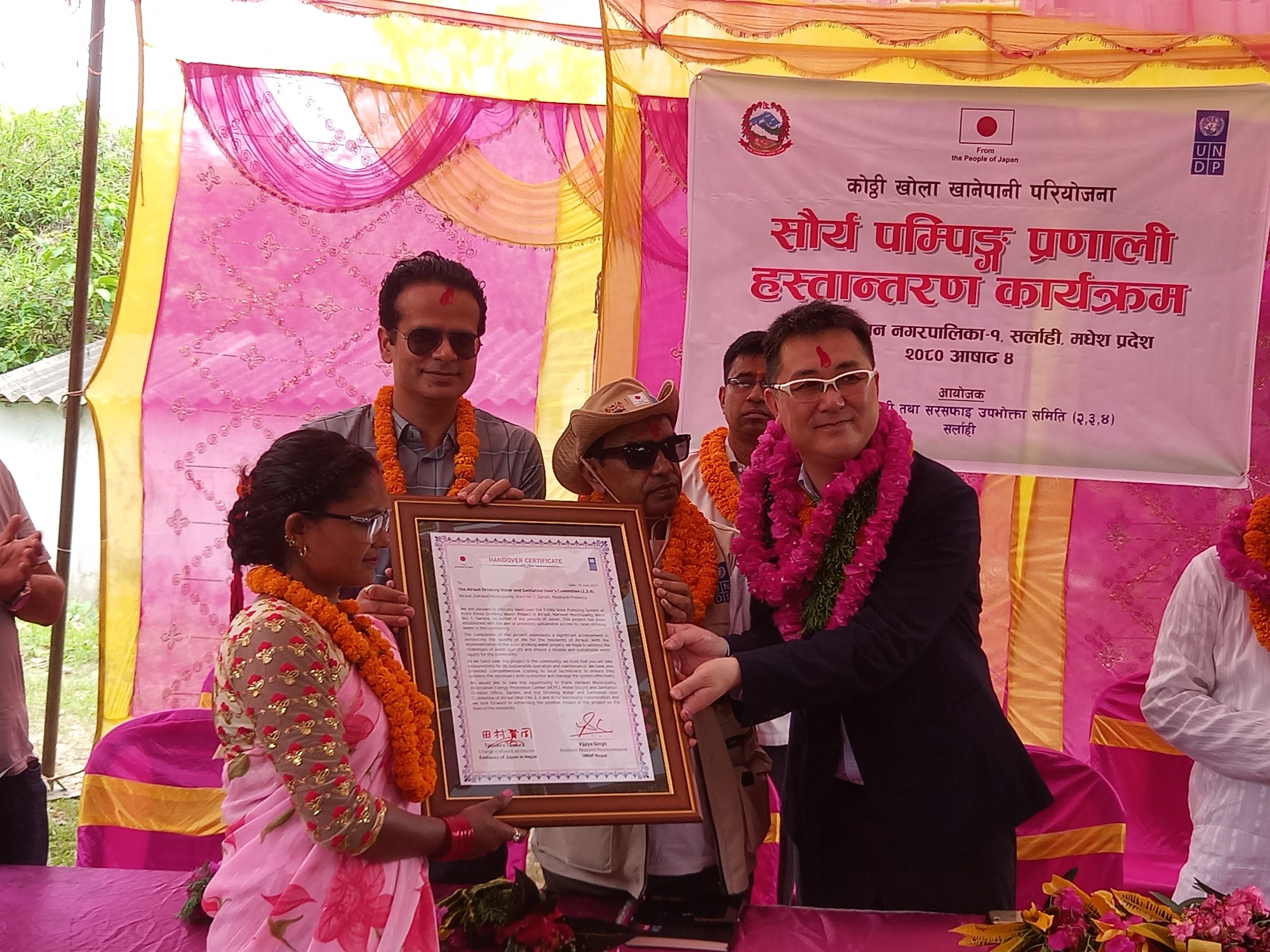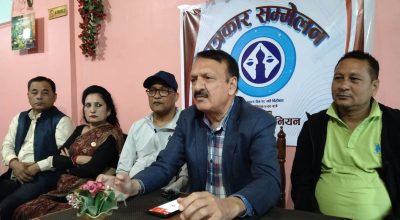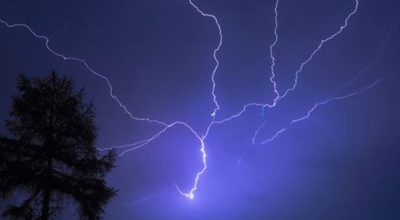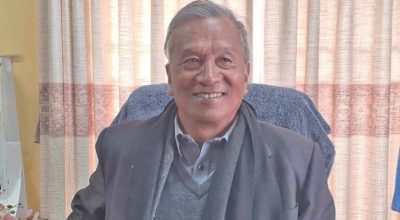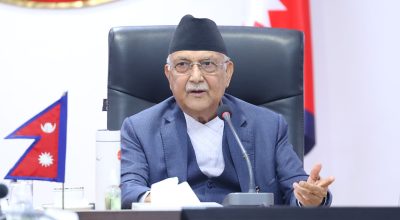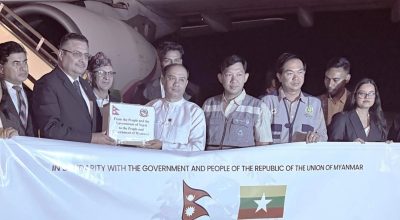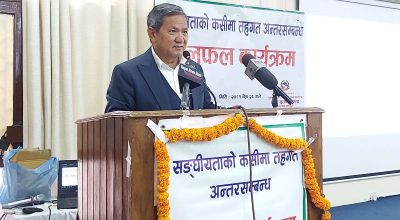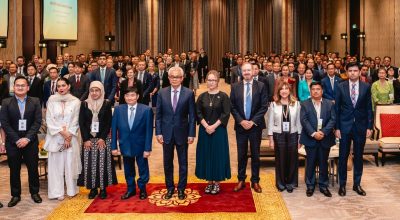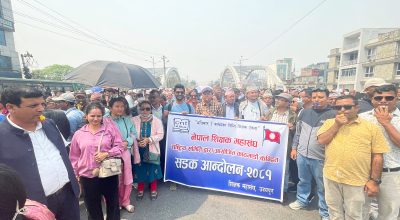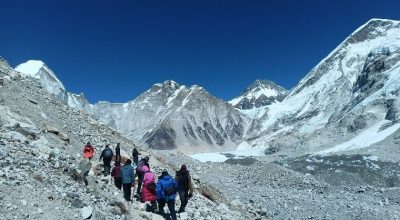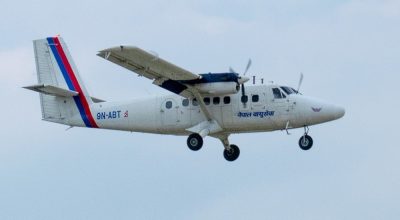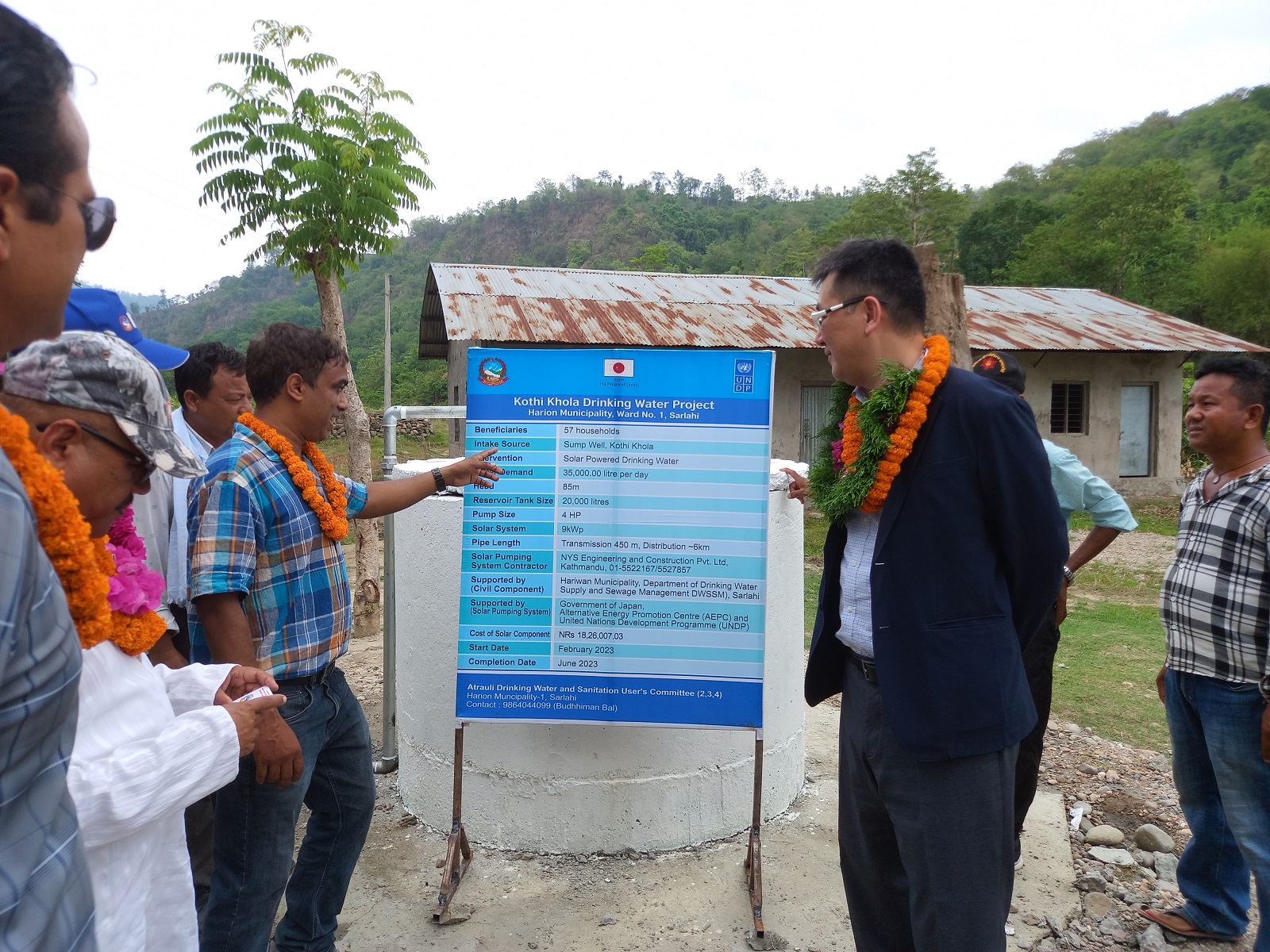
Kathmandu, June 21: More than 11,000 residents in the Sarlahi and Siraha districts of Madhesh province now have access to clean drinking water, with the successful implementation of seven Solar Drinking Water projects.
These projects, supported by the Government of Japan, the Alternative Energy Promotion Centre (AEPC), and the United Nations Development Programme (UNDP), involved the installation of solar pumps with a total capacity of 186 kWp.
The Government of Japan and the UNDP handed over one of the seven projects – 9 kWp Kothi Khola Solar Drinking Water Project – to Atrauli User’s Committee in Ward 1, Harion Municipality, Sarlahi. It reaches out to over 260 residents with access to potable drinking water as well as irrigation for modern agriculture such as drip irrigation for polyhouse farming.
Addressing the handover event, Mr. Takahiro Tamura, Charge d’Affaires ad interim of Japan to Nepal congratulated AEPC, UNDP, District Water Supply and Sewage Office, Hariwan Municipality and people of Atrauli. ‘I hope that this project will enhance the quality of life and provide sustainable access to clean drinking water. The team has also provided the training to the local community so I hope that it will support in the sustainable operation of the project.’ He added that the project will further strengthen the relationship between Japan and Nepal as well as
friendship between peoples of two countries.
Thanking the Government of Japan, AEPC and UNDP, Mr. Ramesh Budhathoki, Mayor of Hariwan Municipality added, ‘We really need to replicate this model to promote sustainable use of water resources by utilizing renewable energy-based water pumping. We ensure our local government’s contribution in maintaining the solar-powered drinking system’.
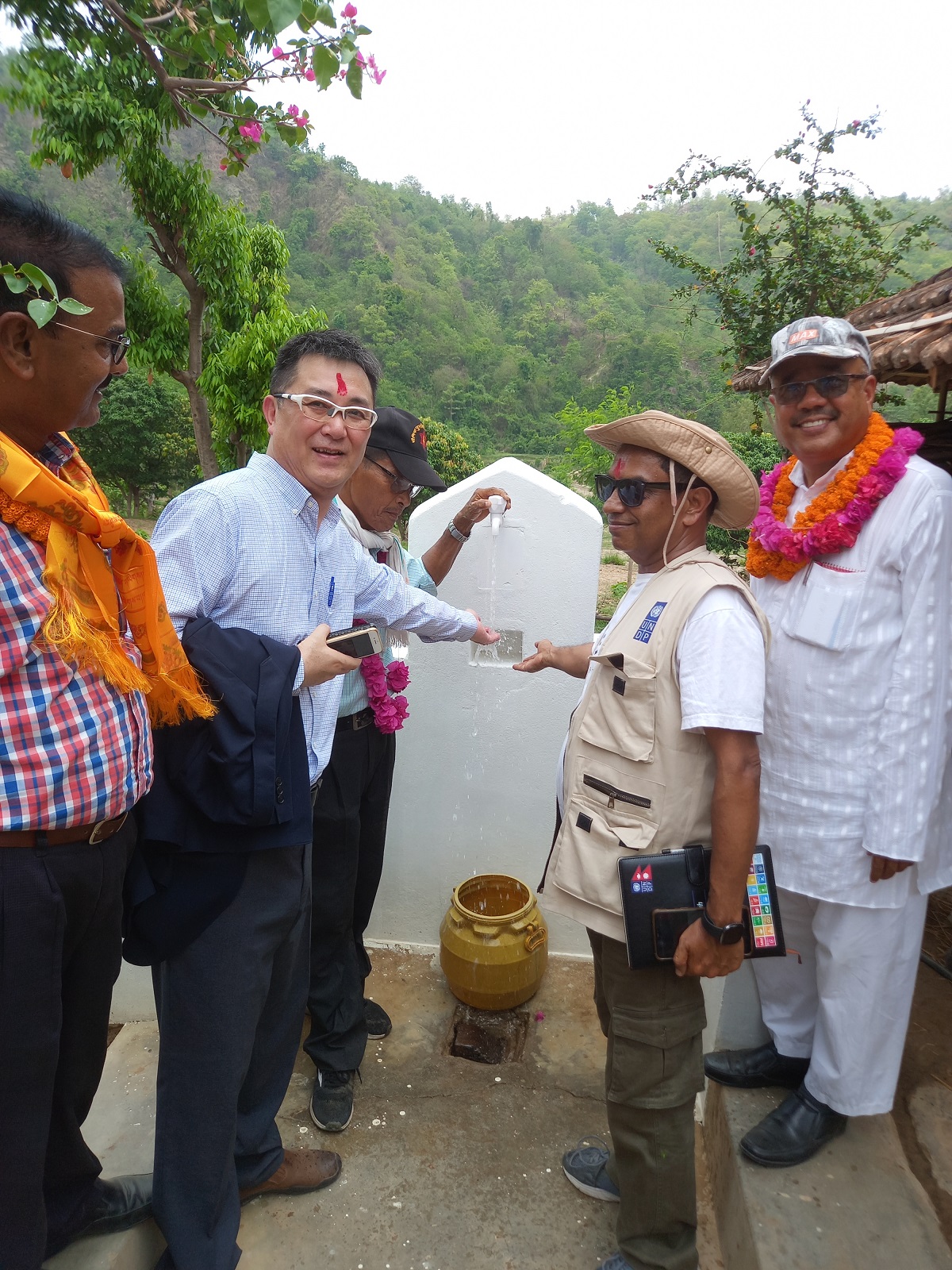
Meanwhile, Bijaya Singh, Assistant Resident Representative, UNDP thanked all collaborators and emphasized the project’s contribution to reaching the goals of Nationally Determined Contribution. “It was not possible to give access to drinking water to the community alone. Hariwan Municipality and DWSSSO initiated the process and as there was a problem with the quality and reliability of grid, AEPC, UNDP and Japan Government come together with solar pumping system which has enabled locals to access drinking water.” He added.
Director of AEPC, Narayan Prasad Adhikari said,” Earlier, the renewable energy is used only in the places where there is no access to national grid but now with this example of Atrauli, we should learn that it should be reach out to the places where required and we should promote sustainable energy sources.
Ms. Kunta Maya Rapal, President of the Atrauli User’s Committee said, ‘Now we don’t have to walk 3 hours a day to fetch water and we can use that time in agriculture and some productive things which can help us in our livelihood.’
In Nepal, the Chure hill regions are especially at risk of lacking access to clean water supply. Locals have long been forced to rely on tiny seasonal streams and water holes due to deforestation, haphazard development, and the extraction of sand and stone, all of which are made worse by climate change. Every day, 3-4 hours were spent by women and children carrying water to their homes.
Along with the solar-powered drinking water system, solar PV backup systems were also installed with support from the Government of Japan. This ensured an uninterrupted electrical supply in critical medical equipment in 11 health facilities as well as computer and audio-visual equipment in 2 schools in Sarlahi district. Moreover, 266 women and men have been trained in different aspects of solar PV technologies and institutional building to ensure their long-term use even after the project phases out.
